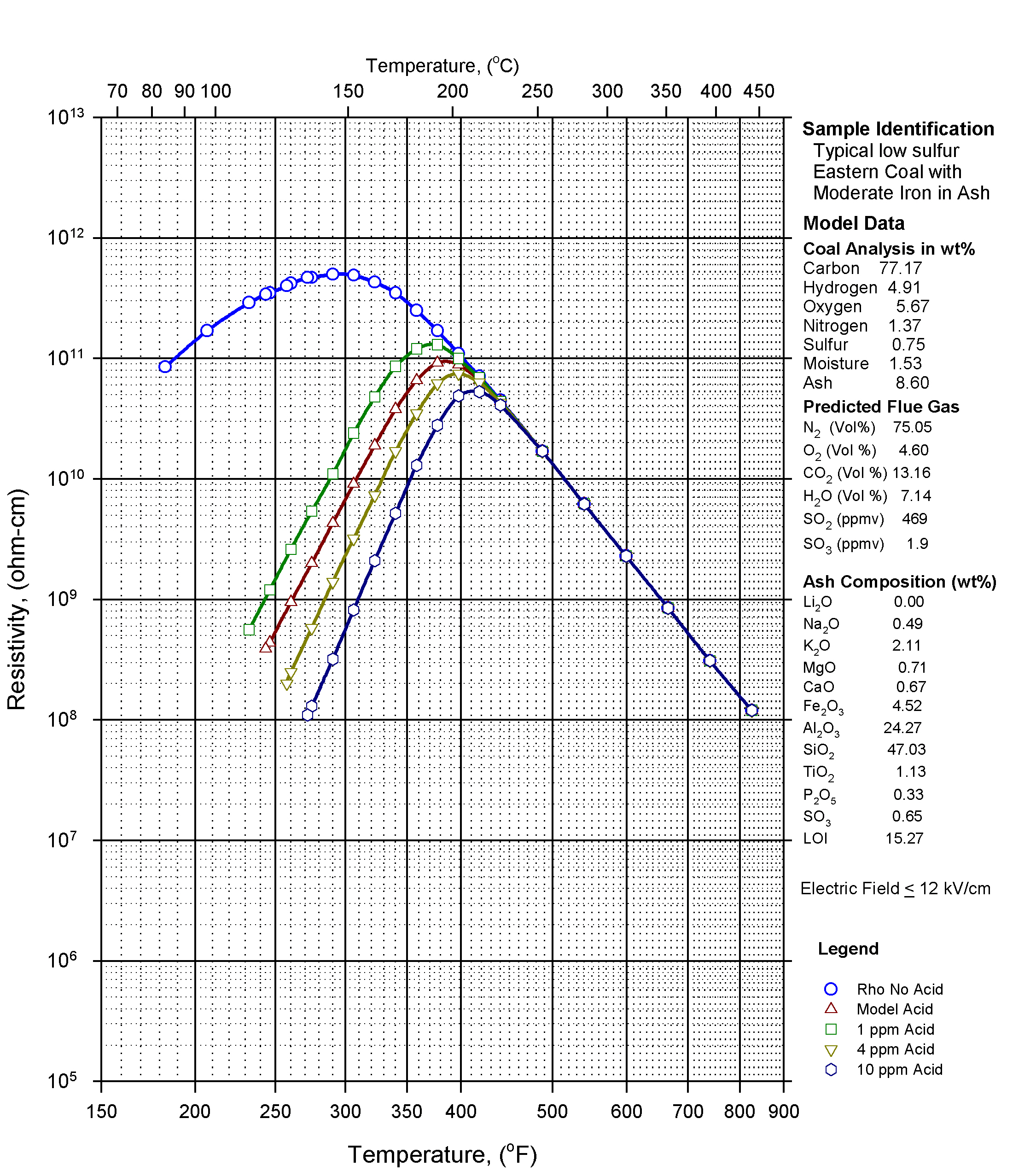Computer Modeled Resistivity
Method Overview
- Using the ultimate coal analysis or a given flue gas analysis and the ash chemical composition, resistivity can be predicted as a function of temperature and environmental conditions. Resistivity is modeled in accordance with EPA Report 600/7-86-010. An example of the model’s output using the data supplied in Table 1, is shown in Figure 3. If one wishes to check the validity of the modeled data, a minimum amount of laboratory data can be acquired for comparison. A reasonable agreement between the modeled data and laboratory data allows one to utilize the modeled information to anticipate resistivity at all temperatures and environmental conditions.
Target Compounds
- Not really a compound-specific analysis. This algorithm determines the electrical properties of a dust. These properties can be used to determine the effectiveness of:
- Coal-switching studies that evaluate the resistivity of select coals and blends to predict precipitator collection performance;
- Flue gas conditioning used to improve precipitator collection performance; and
- Precipitator design and optimization studies.
Performance Tips
- A bulk sample (about ten grams) is required for this analysis. Optimally, samples should be pulled from every precipitator hopper and blended into a representative inlet sample. This is simple across the rows, a little more involved from inlet to outlet. The Deutsch-Anderson equation is used along with hopper mapping to blend samples in a row from inlet to outlet fields.
- Isokinetic samples can also be used for this analysis. One major inconvenience is the bulk quantity required for the measurements.
- Alternatively, resistivity can be modeled from customer-supplied ash mineral analyses and a coal analysis.
Shipping
- Flyash samples are generally non-hazardous for shipping purposes.
- Samples should be shipped in airtight containers.
Applications
- Modeled resistivity is well-suited for predictions of how well a candidate coal will work. It can also predict:
- How well sulfuric acid conditioning might help a given situation;
- How well temperature changes might affect a given situation;
- The resistivity of fuel blends.
- Below shows the Resistivity modeled as a function of environmental conditions in accordance with procedures in EPA Report 600/7-78-010

Accreditation
- No, please contact us if you are interested!